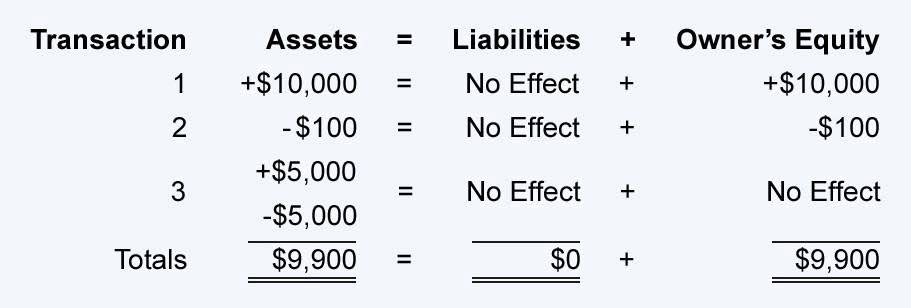
The working capital ratio, also known as the current ratio, measures a company’s financial health by dividing its current assets by its current liabilities. This important calculation reveals a company’s financial cushion for handling day-to-day operations, signaling whether it’s positioned to invest in growth or needs to focus on improving https://silonisyapim.com/asset-disposal-financial-accounting/ cash flow. Accounts receivable and inventory are examples of current assets while accounts payable is an example of current liabilities. An online store that specializes in selling phone accessories from iPhone and Android devices wants to calculate its working capital.

Real-World Application: Why NWC Matters in M&A and Financing

When it comes to selling your business, details that seem small now can have a tremendous impact on the amount of cash you take away from the closing table. When it comes to the concept of net working capital, such details can become a ticking time bomb, set to explode even months after closing. If you aren’t keen on ticking sounds at your meetings, then it pays to educate yourself on the concept of NWC, and to take the advice outlined in this article when it comes to preparing your business for sale. For businesses with normal growth trajectories, the most common method to establish the NWC target is to take the average month-end balances of each working capital account over the past 12 months. Using the LTM average of each working capital account, you can then determine the average NWC for that period. Most acquisitions occur on a cash-free, debt-free basis – the result is that cash and cash equivalents are not included in the calculation of working capital.

Positive vs. Negative Net Working Capital
- A simple calculation known as the net working capital ratio is the best way for you to measure a company’s short-term capital against its short-term debts.
- Having so little paperwork to go over allows the institutions to approve and distribute funding in just hours.
- Still, it’s important to look at the types of assets and liabilities and the company’s industry and business stage to get a more complete picture of its finances.
- Under Generally Accepted Accounting Principles (GAAP), accounts receivable are recorded at their net realizable value, the amount expected to be collected.
- Working capital is the lifeblood of any business, fueling day-to-day operations and helping companies meet financial obligations while pursuing growth opportunities.
Even a profitable business can face bankruptcy if it lacks the cash to pay its bills. For example, if a company has $1 million in cash from retained Grocery Store Accounting earnings and invests it all at once, it might not have enough current assets to cover its current liabilities. To calculate working capital, you subtract a company’s current liabilities from its current assets. Both figures can be found in public companies‘ publicly disclosed financial statements.

Working Capital: Formula, Components, and Limitations
- Now that we understand the basics and the formula of the concept, let us understand how to calculate the changes in net working capital cash flow through the step-by-step explanation below.
- Small business owners must always keep tabs on how much working capital they have on hand.
- On this page, we’ll break down everything you need to know — from understanding its key components to learning how to calculate it accurately.
- Net working capital is calculated by subtracting a company’s current liabilities from its current assets.
- Some examples are accounts receivable, inventory, prepaid expenses, and, of course, cash.
The ideal position is to have more current assets than current liabilities and thus have a positive net working capital balance. This indicates the company lacks the short-term resources to pay its debts and must find ways to meet its short-term obligations. However, a short period of negative working capital may not be an issue depending on the company’s stage in its business life cycle and its ability to generate cash quickly. Current liabilities are obligations a business expects to settle within one year. Operational liabilities commonly involve accounts payable and accrued expenses. NOWC differs from general working capital by excluding non-operating current assets, such as short-term investments, and non-operating current liabilities, like short-term bank loans.
How to Calculate the Net Working Capital Ratio
If you have current assets above the amount you need to maintain a positive NWC, you should reinvest them in your business. This could involve upgrading equipment, exploring potential acquisitions, or embarking on new growth initiatives — all of which can propel your business forward. Other options include paying down long-term debt or paying yourself a distribution as a business owner.
- For example, a strong NWC position often correlates with a quick ratio above 1, indicating sufficient liquid assets like cash and receivables to cover immediate liabilities without relying on inventory.
- Metrics such as days sales outstanding (DSO), days payables outstanding (DPO), and days inventory outstanding (DIO) flesh out a company’s cash conversion cycle.
- Purchase price adjustments can also go in the seller’s favor if they deliver working capital above the target.
- Accounts receivable represent money owed by clients for goods or services delivered.
- The average period could be shorter, such as the last three or six months, if such a period better reflects the operations of the business, or the near-future outlook.

Partnering with PNC Business Banking offers the tools and insights to help you monitor your working capital and support ongoing growth. With a proactive approach to cash flow and resource allocation, your business can stay agile and ready for what’s next. Working capital is the measure of a business’s short-term liquidity and its ability to cover immediate financial obligations.
Accrued Expenses or Liabilities
- Under current assets in its balance sheet, it has cash of $50,000, inventory worth $35,000, account receivables of $30,000, taking its total current assets tally to $115,000.
- On paper, Net Working Capital represents the difference between current assets and current liabilities.
- Keep up with Michelle’s CPA career — and ultramarathoning endeavors — on LinkedIn.
- Subtracting the total current liabilities ($150,000) from the total current assets ($325,000) yields a net working capital of $175,000.
- When calculating NWC, you should also consider how seasonal or cyclical the business is.
- Let’s look at two scenarios using a sample company, Green Valley Grocers, to better understand the impact of having a positive and negative NWC.
If you want to avoid a million-dollar whammy and not leave millions on the table when selling, read on. As for a business calculate net working capital with a more complex structure, like a publicly listed company, current assets may include marketable securities, short-term investments, and intercompany receivables. Essentially, it’s a short-term view of how much cash it has to cover an emergency. If a meteor was to hit a company’s office and they had a positive working capital, they could cover the reconstruction work. A positive amount indicates that the company has adequate current assets to cover short-term obligations. The net working capital is calculated by simply deducting all current liabilities from all current assets.
